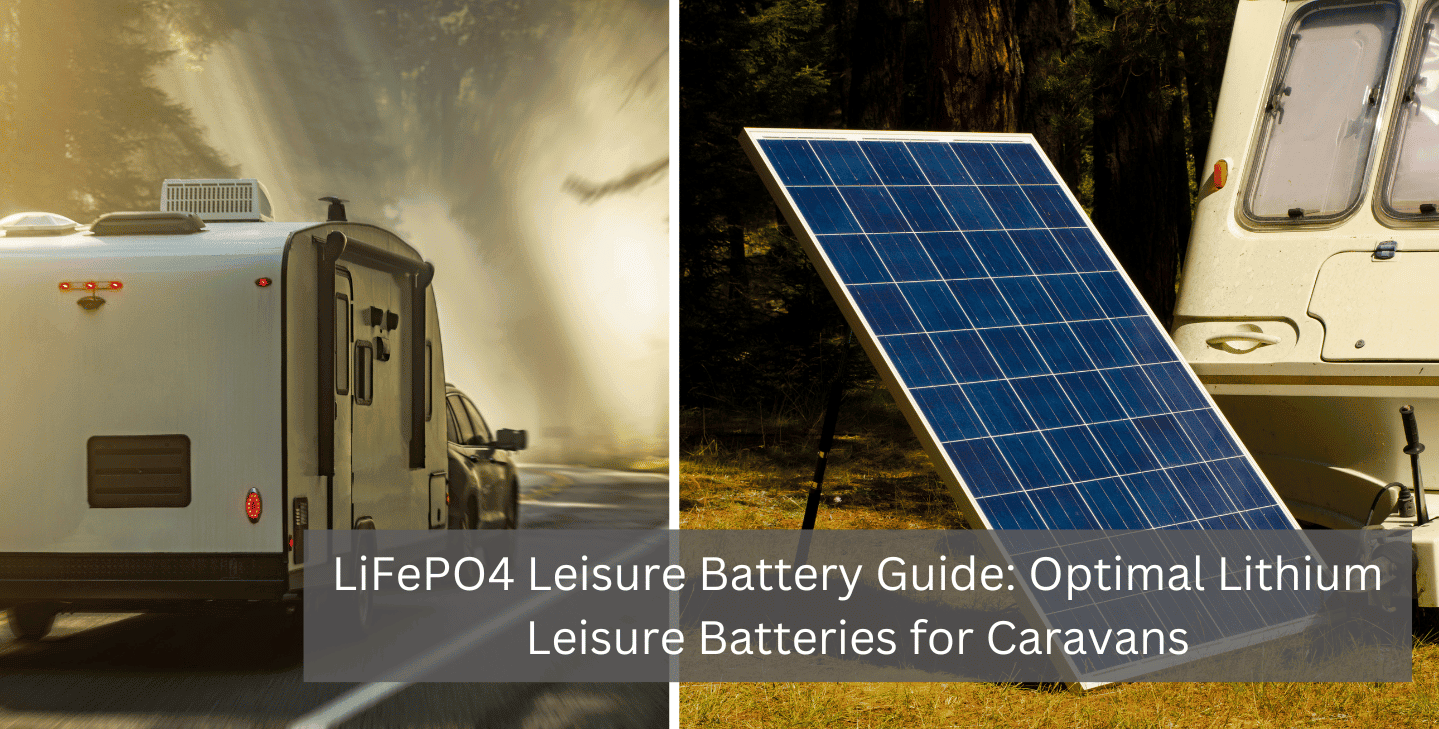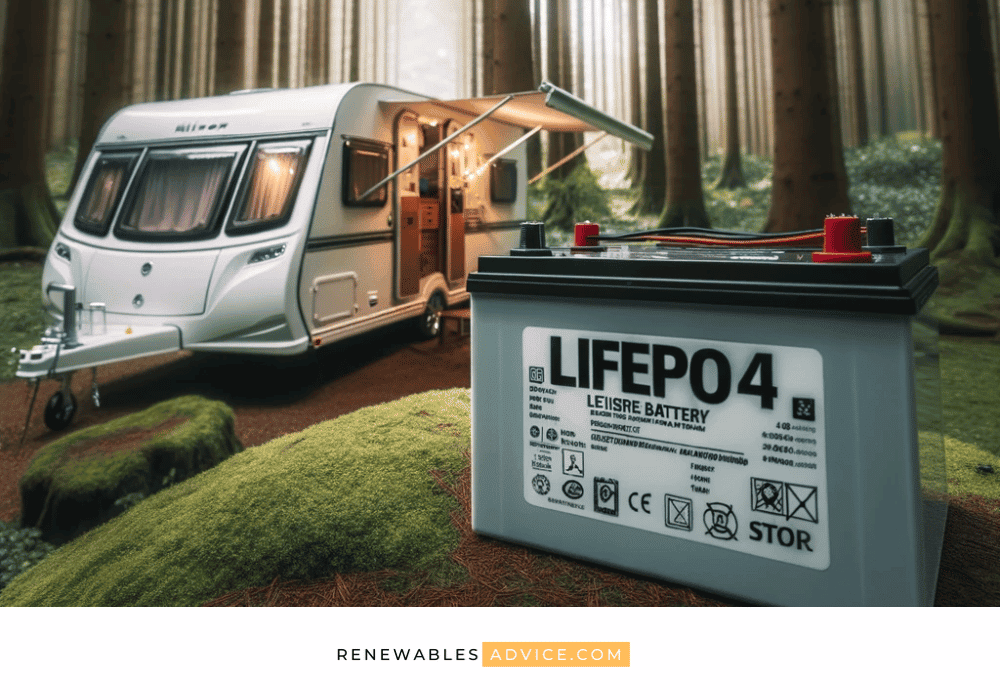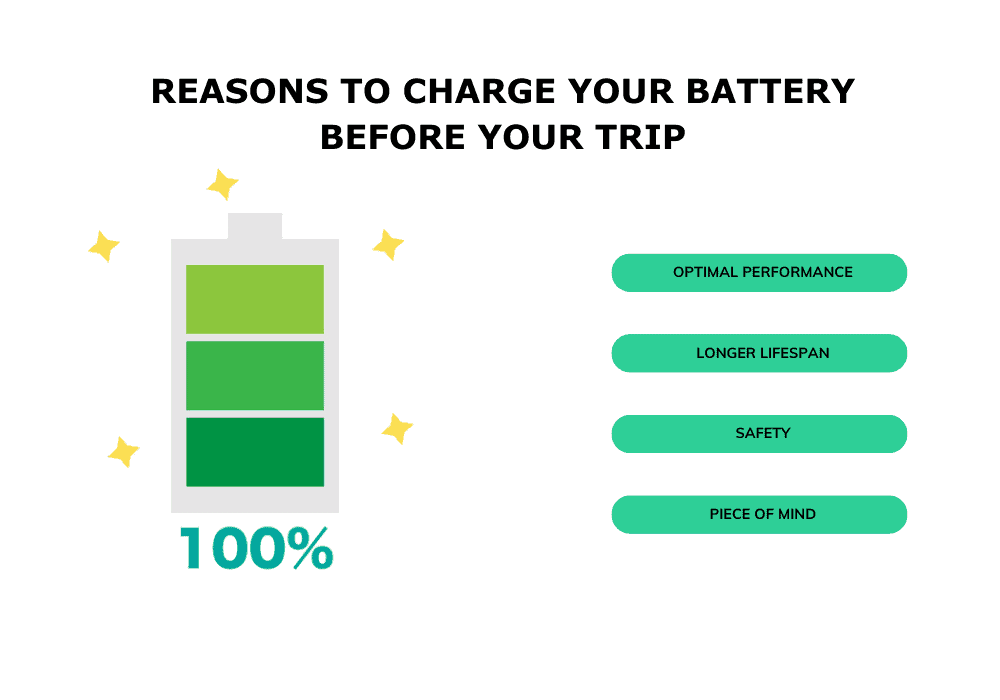LiFePO4 Leisure Battery Guide: Optimal Lithium Leisure Batteries for Caravans
LiFePO4 Leisure Battery Guide: Optimal Lithium Leisure Batteries for Caravans
LiFePO4 Leisure Battery Guide: Optimal Lithium Leisure Batteries for Caravans

When LiFePO4 batteries were introduced to the realm of mobile energy storage. What happened? Travellers never looked back after experiencing the many benefits they offer to life in their caravans and motorhomes.
Central to the appeal of LiFePO4 Leisure Batteries are their attributes such as prolonged cycle life, eco-friendliness, safety, and swift charge capabilities. Notably, for those residing in or journeying on the road, these batteries empower a spectrum of comforts and conveniences: from illuminating spaces with lights, powering televisions for entertainment, boiling water with kettles, to cooking meals in ovens.
While most of the discourse is currently rooted in applications for transportation and renewable energy sectors, the potential reach of these batteries, especially for enthusiasts in leisure activities, is vast and versatile.
Choosing the Right Leisure Battery: Why LiFePO4 Surpasses Lead-Acid Batteries
When it comes to powering your caravan with the most efficient and long-lasting leisure battery, the LiFePO4 or lithium leisure battery stands out significantly from traditional lead-acid batteries. The advent of lithium battery technology marks a notable step away from the older lead-acid technology. This brings forth enhancements in battery performance that are essential for the modern roamer.
Lead-acid batteries, comprising both acid batteries and lead, have long been the standard for leisure batteries. However, the superior energy density, battery life cycle, and reliability of a lithium leisure battery make it an optimal replacement. This is especially true for those seeking a robust leisure battery guide when selecting a new leisure battery.
Battery performance is paramount when considering a leisure battery guide. Here, lithium batteries outshine lead-acid batteries in nearly every aspect. While utilising a lead-acid battery in your caravan might have been adequate in the past, the modern leisure landscape demands more robust and reliable energy solutions.
The lithium battery, compared to its lead-acid counterpart, offers greater efficiency and lengthier operational times. This makes lithium leisure batteries a pragmatic choice for those seeking uninterrupted power on their travels.
Given the choice between lead-acid and lithium leisure batteries, the latter is unquestionably favourable due to their longevity, maintenance-free nature, and environmental friendliness. Lead-acid technology, while economical, is weighed down by its heavier design and more frequent maintenance needs. The lead in lead-acid can also pose environmental concerns, whereas lithium batteries are often praised for being greener.
Leisure battery life and sustainability should not be the only considerations. Replacing a lead-acid battery with a leisure lithium battery can also provide improved safety. This is due to more stable chemistry and less risk of acid spillage. For caravans, where space and weight are at a premium, the compact and lightweight nature of lithium batteries is invaluable. Additionally, batteries must endure varied climates and usage patterns, which lithium batteries can handle more adeptly than lead-acid alternatives.
In conclusion, a leisure battery, particularly for those who treasure their mobility and autonomy, is a critical component of caravan life. Lithium leisure batteries offer advanced battery performance and life over lead-acid technology, making them an optimal choice for those updating or setting up their mobile dwelling. When considering a battery replacement, remember that the advantages of lithium—a lightweight, long-lasting, and consistently reliable power source—clearly outclass the older lead-acid batteries in terms of efficiency, maintenance, and environmental footprint. This cements their status as the superior option for caravan enthusiasts.

Should You Use LiFePO4 Leisure Batteries for Your Caravan and Motorhomes?
You should use LiFePO4 leisure batteries when setting out in your caravan or motorhome as the choice of battery can make all the difference. Here are some of the reasons why:
Efficiency: No energy waste here. With a high energy density, LiFePO4 provides more consistent power.
Safety: Prone to overheating or short-circuiting? Not LiFePO4. They're renowned for thermal and chemical stability.
Eco-Friendly: With concerns of environmental impact rising, LiFePO4 is a green choice. Fewer replacements mean less waste.
Longevity: Traditional lead-acid batteries fade after 300-500 cycles. LiFePO4? Expect over 2000 cycles with proper care and charging methods.
For the caravan enthusiast, the message is clear. Investing in a LiFePO4 leisure battery ensures not just a reliable journey, but a responsible and efficient one.

Should You Charge LiFePO4 Battery Before Your Trip?
You should ensure your LiFePO4 battery is charged, whether it's a weekend getaway or an extensive road trip. Here’s why:
Optimal Performance: A fully charged LiFePO4 battery guarantees the smooth operation of all your devices and utilities.
Battery Lifespan: Regularly draining your battery before charging can reduce its overall lifespan. A pre-trip top-up can extend its longevity.
Safety Precaution: A charged battery means fewer chances of interruptions or breakdowns, ensuring a safer journey.
Peace of Mind: Knowing your LiFePO4 is charged and ready provides a stress-free start to your adventures.
Before hitting the road, taking a moment to charge your LiFePO4 battery isn't just a good idea—it's an essential step to ensure a seamless and enjoyable trip.
What is the ideal voltage to charge a Lithium Leisure Battery?
The ideal voltage to charge a LiFePO4 battery is in the range of 14.0V to 14.6V. In the vast world of leisure batteries, understanding the nuances of charging can significantly enhance your experience. The lithium variant, particularly LiFePO4, has become a go-to for many caravan and motorhome enthusiasts.
The Voltage Factor:
Lithium leisure batteries, unlike their traditional counterparts, require specific charging parameters to ensure optimal performance and longevity. Most lithium leisure batteries, especially LiFePO4 types, typically have a recommended charging voltage range of 14.0V to 14.6V. Venturing outside this range can lead to subpar performance and even compromise the battery's health.
Why this Range Matters:
Optimal Charging: Within the 14.0V to 14.6V range, a lithium leisure battery achieves a balanced and efficient charge. This optimizes energy storage, ensuring your appliances run seamlessly.
Extended Lifespan: Consistent charging within the recommended range can significantly prolong the battery's life. Excessive voltage can induce stress and reduce overall lifespan.
Safety Considerations: Adhering to the specified voltage range also reduces risks associated with overcharging, such as potential overheating or even damage to the battery.
As with all technical equipment, always consult your battery's manual for specific recommendations, but this range provides a general guideline for most LiFePO4 leisure batteries.

Should You Consider a Motorhome Lithium Battery Upgrade?
You should always consider improving the equipment at your disposal. Motorhome adventures have, in many respects, evolved thanks to breakthroughs in power storage methodologies. At the forefront of these technological leaps? Lithium batteries. Their rise in the motorhome sphere is impossible to overlook, with a surge in chatter and discussions surrounding their benefits. So, as a motorhome enthusiast, here is why you should give some thought to a lithium battery upgrade.
Lithium-ion vs. Traditional Lead-Acid:
When diving into the battery world, the question of Lithium-ion vs Lead-acid is often asked, with Lithium-ion coming out on top in many areas. Why is this so? Their elegant construction, unmatched energy concentration, and extended lifespan. For the motorhome aficionados out there, this means bidding goodbye to frequent battery swaps, savouring a steadfast energy flow, and shaving off some vehicular weight. A trio, indeed, that most motorhome enthusiasts nod in agreement to.
Weighing the investment comes down to a few factors:
- Efficiency and Longevity: Lithium batteries can often deliver a larger percentage of their rated capacity, ensuring that your motorhome's gadgets and appliances remain powered for extended periods. Couple that with a lifespan longer than Lead-acid batteries, and the investment begins to make sense.
- Environmental Impact: With fewer replacements and a more eco-friendly disposal process, lithium batteries pave the way for greener adventures.
- Cost Perspective: While the initial outlay for a lithium battery may be higher when amortized over its extended life and considering the potential savings in energy and replacement costs, it can offer value in the long run.
Transitioning to a lithium battery for your motorhome is not merely about hopping onto a trend. It's about optimising your travel experience, ensuring reliability, and making a sustainable choice. While the investment can seem steep initially, the long-term benefits make a compelling case for at least considering the switch. Always evaluate your unique needs and consult experts before making the leap, but the prospects of a lithium-powered journey are undeniably enticing.
Does Switching to a LiFePO4 Battery Save You Money in the Long Run?
Switching to a LiFePO4 battery does save you money in the long run even after a larger initial investment. The consideration of long-term financial gains is paramount, and with LiFePO4 batteries, often praised for their resilience, invite a pertinent question: Do they truly offer fiscal advantages over time? To dissect this, one must compare initial costs with potential savings. While their upfront price might be steeper than traditional counterparts, the longevity and consistent performance they boast significantly diminish the routine expenses tied to frequent replacements and maintenance. Couple this with reduced energy wastage and efficiency, and a pattern emerges. Over the years, not only does the LiFePO4 battery pay for itself, but it also nudges motorhome and caravan enthusiasts toward a more economical energy path. The savings, both direct and indirect, transform what seems like a premium purchase into a sound, long-term investment.
Do LiFePO4 Batteries Enhance the Efficiency of Mobile Energy Storage?
LiFePO4 batteries enhance the efficiency of mobile energy storage by standing resilient, offering consistent energy without unwarranted dips, and not buckling under heavy loads like conventional battery types. Their long-lasting nature pledge to illuminate your motorhome or caravan journeys for numerous adventures ahead, notably curbing the recurrent need for battery swaps. Delving deeper, their relatively lightweight construction affords a seamless integration into mobile units without tipping the scale. All in all, for those journeying afar in a motorhome or simply seeking dependable energy on the move, Lithium-iron phosphate batteries are not just an upgrade from other battery types; they're a game-changer.
What Are the Other Battery Types Comparable to LiFePO4 for Travel Use?
Within the diverse world of portable energy storage, the discerning traveller often finds themselves confronted with many battery options. Beyond the often-mentioned LiFePO4, other contenders vie for the spotlight, each boasting its unique merits. Among these rivals, two distinct types warrant a closer gaze: the AGM (Absorbent Glass Mat) and the Gel batteries.
Embraced by many seasoned adventurers, a lot of travellers would like to know all about AGM batteries as an alternative option. These batteries come fitted with a special fiberglass mat that wicks the electrolyte solution. For those wanderers ever vigilant of untimely mishaps, the AGM battery's design comes as a reassuring friend, promising a journey free from unwanted spills. And it doesn't just stop at being spill-resistant. Dive a tad deeper, and you'll find AGM batteries proudly showcasing an admirable discharge rhythm. Couple that with their adeptness at unfailingly pumping out high currents, and their charm becomes hard to overlook.
On the other flank, Gel batteries step forth. These are known to infuse their electrolyte with a silica-based gel, giving rise to a thick, paste-like consistency. While their charging rate might be slower than their AGM counterparts, they shine by being less sensitive to temperature than AGM.
Pitted against the LiFePO4's lightweight design, superior cycle life, and impressive energy density, both AGM and Gel batteries offer unique advantages. These batteries masterfully blend the essence of practicality and ease. But, a tip for the intrepid voyager? Delve into what you truly need. Mull over the ups and downs of each option and read user reviews on all choices. It's only with this mindful approach that one can truly embark on a battery choice that’s both enlightened and fitting.
What Do Users Say About Using LiFePO4 Batteries for Caravans and Motorhomes?
When delving into the world of motorhome and caravan power sources, users often cast a spotlight on LiFePO4 batteries. Their endorsement? Overwhelmingly positive. User reviews point out that not only does the LiFePO4 pack a commendable punch in energy efficiency, but its durability factor is noteworthy. It's that sturdy companion, geared for the long haul, ensuring those campsite lights remain aglow for many seasons. Combine this with a reduced eco-footprint, and it's no wonder they've carved a niche in the motorhome arena. So, next time you're pondering a battery switch, let the user chorus guide your choice. Their consensus sings in harmony: LiFePO4 stands tall amongst its peers.